This cat breed is super vocal. Definitely my top choice for my next cat.
#cat #wildcat #savannahcat
The Savannah is a hybrid cat breed. It results from a cross between a serval and a domestic cat. This hybridization typically produces large and lanky offspring with vibrant spotted coats.
The Savannah's tall and slim build give them the appearance of greater size than their actual weight. Size is very dependent on generation and sex, with F1 hybrid male cats usually being the largest.
F1 and F2 generations are usually the largest, due to the stronger genetic influence of the African serval ancestor. As with other hybrid cats such as the Chausie and Bengal cat, most first-generation cats will possess many of the serval's exotic traits, while these traits often recede in later generations. Male Savannahs tend to be larger than females.
Early-generation Savannahs can weigh 8 to 23 kg (18 to 51 lb) with the most weight usually attributed to the F1 or F2 neutered males and mainly due to genetics. Later-generation Savannahs weigh usually between 2.5 and 8 kg (5.5 and 17.6 lb).[5] Because of random factors in Savannah genetics, size can vary significantly, even in the same litter.
The coat of a Savannah should have a spotted pattern, the only pattern accepted by the TICA breed standard.[6] Non-standard patterns and colors include rosetted, marble, snow (point), blue, cinnamon, chocolate, lilac (lavender) and other diluted colors derived from domestic sources of cat coat genetics.
TICA's breed standard calls for brown-spotted tabby (cool to warm brown, tan or gold with black or dark brown spots), silver-spotted tabby (silver coat with black or dark grey spots), black (black with black spots), and black smoke (black-tipped silver with black spots) only.[6]
Domestic outcrosses from the early days in the 1990s have greatly impacted the breed's development in both desired and non-desired traits. As of 2012, most breeders perform Savannah-to-Savannah pairings; using outcrosses is considered less than desired. There are no longer any permitted domestic outcrosses for the Savannah breed now that TICA championship status has been achieved. Previously domestic outcrosses for the Savannah breed that were permissible in TICA were the Egyptian Mau, the Ocicat, the Oriental Shorthair, and the Domestic Shorthair. F1 through F4 male savannahs are sterile; therefore breeders typically use F5 males to produce the second generation with a F1 female.
Outcrosses that are not allowed according to the TICA breed standard include crosses with Bengal and Maine Coon cats. These impermissible breeds can bring many unwanted genetic influences. Outcrosses are very rarely used as of 2012, as many fertile Savannah males are available for studs. Breeders prefer to use a Savannah, rather than a non-Savannah breed, with the serval to produce F1s in order to maintain as much breed type as possible.
A Savannah's exotic look is often due to the presence of many specific serval characteristics. Most prominent among these are the various color markings, the tall, deeply cupped, wide, rounded and erect ears, very long legs; fat, puffy noses; and hooded eyes. The bodies of Savannahs are long and leggy. When a Savannah is standing, its hind end is often higher than its prominent shoulders. The small head is taller than wide, and the cat has a long, slender neck.[7] The back of the ears have ocelli—a central light band bordered by black, dark grey or brown, giving an eye-like effect. The short tail has black rings, with a solid black tip. The eyes are blue in kittens (as in other cats), and may be green, brown, gold or of a blended shade in the adult. The eyes have a "boomerang" shape, with a hooded brow to protect them from harsh sunlight. Ideally, black or dark "tear-streak" or "cheetah tear" markings run from the corner of the eyes down the sides of the nose to the whiskers, much like that of a cheetah.
Source: Wikipedia.com
#cat #wildcat #savannahcat
The Savannah is a hybrid cat breed. It results from a cross between a serval and a domestic cat. This hybridization typically produces large and lanky offspring with vibrant spotted coats.
The Savannah's tall and slim build give them the appearance of greater size than their actual weight. Size is very dependent on generation and sex, with F1 hybrid male cats usually being the largest.
F1 and F2 generations are usually the largest, due to the stronger genetic influence of the African serval ancestor. As with other hybrid cats such as the Chausie and Bengal cat, most first-generation cats will possess many of the serval's exotic traits, while these traits often recede in later generations. Male Savannahs tend to be larger than females.
Early-generation Savannahs can weigh 8 to 23 kg (18 to 51 lb) with the most weight usually attributed to the F1 or F2 neutered males and mainly due to genetics. Later-generation Savannahs weigh usually between 2.5 and 8 kg (5.5 and 17.6 lb).[5] Because of random factors in Savannah genetics, size can vary significantly, even in the same litter.
The coat of a Savannah should have a spotted pattern, the only pattern accepted by the TICA breed standard.[6] Non-standard patterns and colors include rosetted, marble, snow (point), blue, cinnamon, chocolate, lilac (lavender) and other diluted colors derived from domestic sources of cat coat genetics.
TICA's breed standard calls for brown-spotted tabby (cool to warm brown, tan or gold with black or dark brown spots), silver-spotted tabby (silver coat with black or dark grey spots), black (black with black spots), and black smoke (black-tipped silver with black spots) only.[6]
Domestic outcrosses from the early days in the 1990s have greatly impacted the breed's development in both desired and non-desired traits. As of 2012, most breeders perform Savannah-to-Savannah pairings; using outcrosses is considered less than desired. There are no longer any permitted domestic outcrosses for the Savannah breed now that TICA championship status has been achieved. Previously domestic outcrosses for the Savannah breed that were permissible in TICA were the Egyptian Mau, the Ocicat, the Oriental Shorthair, and the Domestic Shorthair. F1 through F4 male savannahs are sterile; therefore breeders typically use F5 males to produce the second generation with a F1 female.
Outcrosses that are not allowed according to the TICA breed standard include crosses with Bengal and Maine Coon cats. These impermissible breeds can bring many unwanted genetic influences. Outcrosses are very rarely used as of 2012, as many fertile Savannah males are available for studs. Breeders prefer to use a Savannah, rather than a non-Savannah breed, with the serval to produce F1s in order to maintain as much breed type as possible.
A Savannah's exotic look is often due to the presence of many specific serval characteristics. Most prominent among these are the various color markings, the tall, deeply cupped, wide, rounded and erect ears, very long legs; fat, puffy noses; and hooded eyes. The bodies of Savannahs are long and leggy. When a Savannah is standing, its hind end is often higher than its prominent shoulders. The small head is taller than wide, and the cat has a long, slender neck.[7] The back of the ears have ocelli—a central light band bordered by black, dark grey or brown, giving an eye-like effect. The short tail has black rings, with a solid black tip. The eyes are blue in kittens (as in other cats), and may be green, brown, gold or of a blended shade in the adult. The eyes have a "boomerang" shape, with a hooded brow to protect them from harsh sunlight. Ideally, black or dark "tear-streak" or "cheetah tear" markings run from the corner of the eyes down the sides of the nose to the whiskers, much like that of a cheetah.
Source: Wikipedia.com
- Catégories
- Chats de Race Chausie
- Mots-clés
- Savannah cat, Savana cat, cat







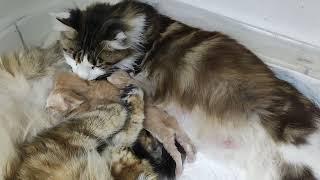
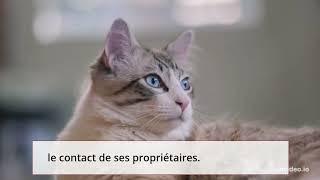
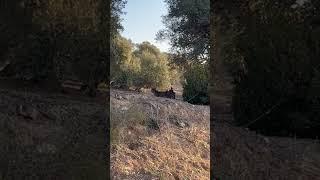
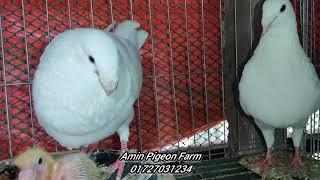
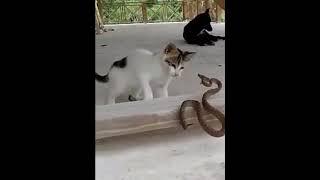


Commentaires